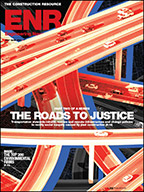Just when it seems that we have resigned ourselves to the partisan gridlock in Congress, there is a bypass lane for at least one issue that will immediately benefit the U.S. economy. We can rebuild American infrastructure faster, and with better results. And we don’t need Congress to get it done.
Over the years, we have shackled our projects with accreted policies and procedures that are not legal requirements and often don’t generate better results.
Think of it as the infrastructure equivalent of defensive medicine: most environmental impact statements and environmental assessments are larded with exhaustive, often
 |
| Porcari |
Ironically, many would argue that supersized reviews are still as vulnerable to legal challenges as the original EIS, a document started 10 days after President Nixon signed NEPA and finished in a week, including all needed interagency coordination!
But in today’s NEPA and associated permitting processes, we wait for one reviewer to comment before moving sequentially to the next. That review then may trigger a re-review of previous approvals. Projects can be trapped in the do-over loop multiple times, so that the approval and permitting process for major jobs now is typically measured in years.
By adopting concurrent (rather than consecutive) environmental and other reviews, and front–loading public and agency input, we can build better projects, faster.
Early efforts to re-engineer these multiple processes, part of a new executive branch pilot under way along with state and local agencies, have already paid dividends in time and money saved.
An environmental impact statement for a major bridge construction project usually takes four to five years but was completed for New York’s $3.9-billion Tappan Zee Bridge project now under construction in just 14 months.
The I-95 Whittier Bridge project in Massachusetts shaved months from its approval timeline by setting concurrent state and federal reviews.
And in Los Angeles, early coordination among reviewing agencies for the Metro Green Line transit extension resulted in a new route that reduced the project cost, saved time and avoided some previously identified community impacts.
Collaboration
Federal agencies have the legal authority to concurrently review major projects, with comments posted on-line and collaborative decision-making occurring in real time.
Unfortunately, it is still the rare projects such as the ones cited above that take advantage of this kind of real collaboration. It’s time to mainstream these process reforms.
Front-loading the approval process with greater community and agency collaboration helps build a consensus on outcomes and avoids nasty surprises at the end of the process. It’s also the right thing to do.
Some of this process re-engineering is now taking place, but much more remains to be done. The U.S. Army Corps of Engineers has committed to a work plan that will result in reviews of Clean Water Act Section 404 water quality permits concurrently with the NEPA process for major projects—rather than after.
The U.S. Coast Guard also now will do the same for bridge permits. These two reforms alone can shave months, and sometimes years, from today’s timeframes.
President Obama’s stated goal of a 50% reduction in review times for major infrastructure projects is readily achievable and should be pursued with single-minded determination. Now is the time to double down on these common-sense efforts.
Pulling a major project forward by two years can yield tens of millions of dollars in savings that can be invested in better community and environmental outcomes.
The same process re-engineering that has been tested on a pilot basis should be applied broadly.
Transportation and other infrastructure projects are the building blocks of economic development. For a nation that has been living off the infrastructure investments of our parents and grandparents, it’s time to pay it forward. But let’s do it smarter and faster.
It’s time for measurably better outcomes through a quicker, more transparent process. That’s a bipartisan deal for rebuilding America that we can all agree to.
John D. Porcari is a senior vice president at Parsons Brinckerhoff, a global professional services and construction management firm based in New York City. Formerly deputy secretary of the U.S. Transportation Dept., he can be reached at porcarij@pbworld.com.




Post a comment to this article
Report Abusive Comment